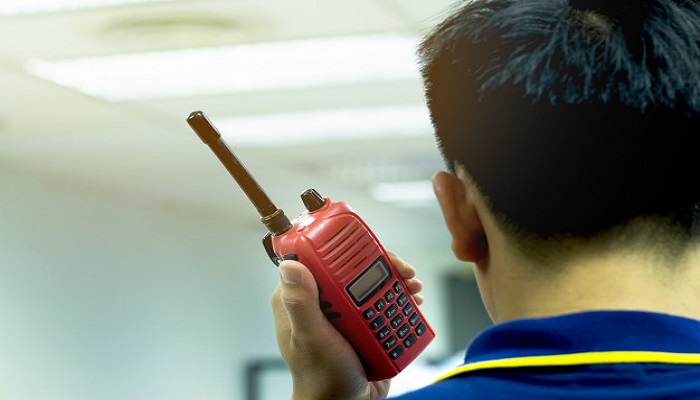From Field to Office: The Strategic Advantages of Walkie-Talkies in Business

In the ever-evolving landscape of business communication, organizations are constantly seeking innovative solutions to enhance efficiency and productivity. While cutting-edge digital technologies dominate headlines, a time-tested tool continues to prove its worth across various industries: the walkie-talkie. From construction sites to retail floors, these robust devices, such as the reliable kenwood walkie talkie, offer a plethora of strategic advantages that modern businesses simply cannot afford to overlook. This article delves into the myriad ways walkie-talkies are revolutionizing business operations, fostering seamless communication, and driving organizational success in both field and office environments.
The Renaissance of Radio Communication in Modern Business
In an era dominated by smartphones and instant messaging, the resurgence of walkie-talkies in professional settings might seem counterintuitive. However, these devices have undergone significant technological advancements, transforming them into indispensable tools for businesses across diverse sectors. Modern walkie-talkies boast enhanced range, crystal-clear audio quality, and durability that surpasses many contemporary communication devices. Their ability to function in areas with poor cellular coverage, coupled with instant push-to-talk functionality, makes them invaluable in time-sensitive situations.
Moreover, the integration of digital features, such as GPS tracking and text messaging capabilities, has further expanded their utility. This renaissance in radio communication technology has positioned walkie-talkies as a vital component in the arsenal of businesses striving for operational excellence and seamless coordination.
Enhancing Team Coordination and Operational Efficiency
One of the primary advantages of incorporating walkie-talkies into business operations is the remarkable improvement in team coordination and overall operational efficiency. These devices enable instant, one-to-many communication, allowing managers to disseminate critical information to entire teams simultaneously. This capability is particularly crucial in dynamic environments such as construction sites, manufacturing plants, or large-scale events, where rapid decision-making and real-time updates are essential.
The elimination of the need to dial numbers or navigate through contact lists significantly reduces communication lag, enabling swift responses to emerging situations. Furthermore, the simplicity of walkie-talkie operation minimizes distractions, allowing employees to remain focused on their tasks while staying connected. This seamless integration of communication into workflow processes translates into tangible improvements in productivity and operational streamlining.
Cost-Effectiveness and Long-Term ROI
When evaluating communication solutions, businesses must consider both immediate costs and long-term return on investment (ROI). Walkie-talkies present a compelling case in this regard, offering substantial cost savings compared to cellular plans or other communication systems. The initial investment in quality devices is offset by the absence of monthly fees, data charges, or per-minute costs associated with cellular services. Additionally, the durability and longevity of modern walkie-talkies contribute to their cost-effectiveness, with many models designed to withstand harsh conditions and prolonged use.
The reduction in communication-related expenses, coupled with the productivity gains facilitated by efficient team coordination, results in a significant positive impact on a company’s bottom line. This favorable cost-benefit ratio makes walkie-talkies an attractive option for businesses of all sizes seeking to optimize their communication infrastructure while maintaining fiscal responsibility.
Enhancing Safety and Emergency Preparedness
In industries where safety is paramount, the role of walkie-talkies extends beyond mere communication to become a critical component of emergency preparedness and risk mitigation strategies. These devices provide a reliable means of communication during power outages, natural disasters, or other crisis situations where cellular networks may be compromised. The ability to instantly alert entire teams to potential hazards or coordinate evacuation procedures can be lifesaving in emergency scenarios.
Many modern walkie-talkies also incorporate features specifically designed for safety applications, such as lone worker monitoring, man-down alerts, and emergency call buttons. These functionalities not only enhance the overall safety of employees but also contribute to compliance with occupational health and safety regulations. By integrating walkie-talkies into their safety protocols, businesses demonstrate a commitment to employee well-being while simultaneously fortifying their emergency response capabilities.
Versatility Across Industries and Applications
The adaptability of walkie-talkies to diverse business environments underscores their strategic value across a wide spectrum of industries. In retail settings, these devices facilitate seamless communication between sales floor staff and backroom inventory management, enabling quick responses to customer inquiries and efficient restocking processes. Hospitality venues utilize walkie-talkies to coordinate housekeeping, maintenance, and guest services, ensuring prompt attention to guest needs and smooth operational flow.
In healthcare facilities, walkie-talkies play a crucial role in coordinating patient care, emergency response, and interdepartmental communication. The logistics and transportation sector leverages these devices for real-time coordination of shipments, warehouse operations, and fleet management. Even in office environments, walkie-talkies find application in facilities management, security operations, and interdepartmental coordination. This versatility makes walkie-talkies a valuable investment for businesses seeking a flexible communication solution adaptable to evolving operational needs.





